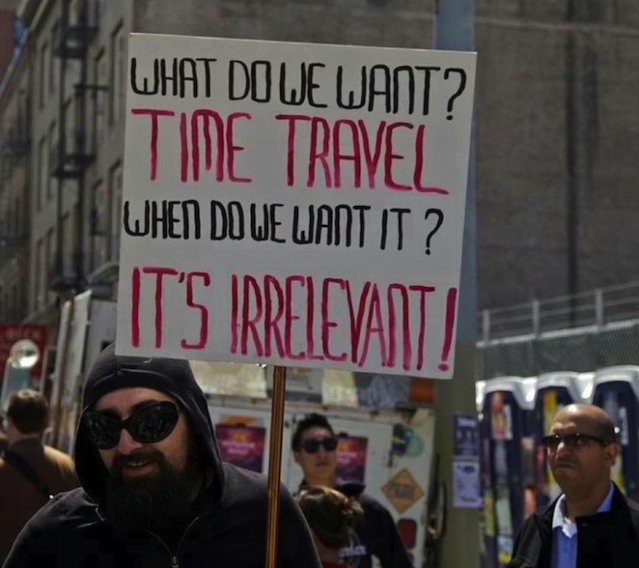Mediapocalypse
The ubiquity of headlines like these suggests that nihilism is the pet philosophy of the storytellers known as "journalists." But they're not the only fabulists to thrive on dread and despair. A majority of the prophets down through the ages have been allergic to the possibility that the future might hold anything besides endlessly messy complications.
The sixteenth century's creepy horror-meister Nostradamus wasn't the first, but he has been one of the most enduring. "In the year 1999 and seven months," he bellowed back in 1555, "a king of terror will come from the sky." Nope. Didn't happen. Nor have all but a handful of his myriad predictions, and even those require a would-be interpreter to make extravagant use of the art of free association.
Ghoulish modern soothsayers have refined and expanded the scare-the-crap-out-of-'em tradition. At my count, 322 notorious New Age mystics have, since 1968, foreseen cataclysmic "earth changes" that will flush away the Left Coast and create beach-front property in Nebraska. A multitude of their colleagues agree that most of humanity will be wiped out any minute now, but they see the death blow coming via other means. Lethal solar flares, nuclear war, and fresh plagues are old standbys, though newcomers worm their way onto the list periodically, including my personal favorite: an evil artificial intelligence that achieves sentience on the Internet.
As entertaining as modern prognosticators' curses can be, however, their track record is as abysmal as Nostradamus's. The fact that Nebraska is still without a seacoast should be enough evidence to send many of them into disgraced hiding.
Amazingly, the ineptitude of the frightful omen-slingers has not diminished their appeal. Their newsletters and websites proliferate. They have spawned the runaway popularity of syndicated radio shows rooted in edge-of-the-seat invocations of imminent global disasters. Tally up the New Age devotees of spooky woo-woo and the Christian fundamentalist worshipers of divine uh-oh and you've got a cast of millions.
Cultured, rational folks like you and I chuckle. How can so many people believe in so much nonsense? And yet as the tears of ridicule splash down from my cheeks onto today's New York Times, a heretical theory bubbles up into view. Maybe the boogie-man prophets captivate so many imaginations because there are far more influential minds constantly at work nurturing the conditions necessary for apocalyptic thinking to bloom.
In our culture, cynicism has come to be regarded as a sign of intellectual vigor. It's smart to expect and look for the worst in everything. Optimism is thought to be the province of sentimental fools with no talent for critical thinking. Entropy and disintegration are inherently more interesting subjects to explore than redemption and renewal, availing greater opportunities to show off one's acumen.
And soothsayers are really just bit players in the spreading of these memes. The most potent disseminators are the storytellers known as journalists. They comprise the engine of the myth-making machinery. "The universe is not made of molecules," said the poet Muriel Rukyser. "It is made of stories." Subtly and relentlessly, the journalists weave our universe from narratives of turbulence, loss, decay, and corruption. John Keats thought that if something is not beautiful, it is probably not true, but our chief storytellers suggest the opposite: If something is not ugly, it is probably not true.
The Nostradamus wannabes are easy to dismiss. Their spectacularly idiotic fantasies are laughable. But journalists churn out measured, believable doses of doom and gloom. No single mini-armageddon is too much to swallow, but the sum total of their agitated drone adds up in the long run to a far more powerful prophetic vision than the silly New Age and fundamentalist seers: mediapocalypse.

Prayer for Us
Pronoia therapy
Prayer Warriors Standing By
Listen to Rob's Expanded Audio horoscopes, updated weekly.
Pronoia therapy
Prayer Warriors Standing By
Listen to Rob's Expanded Audio horoscopes, updated weekly.

